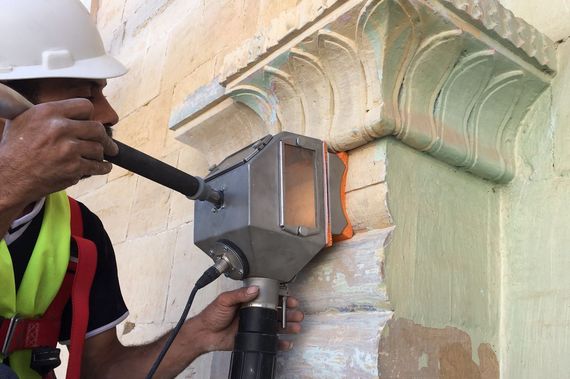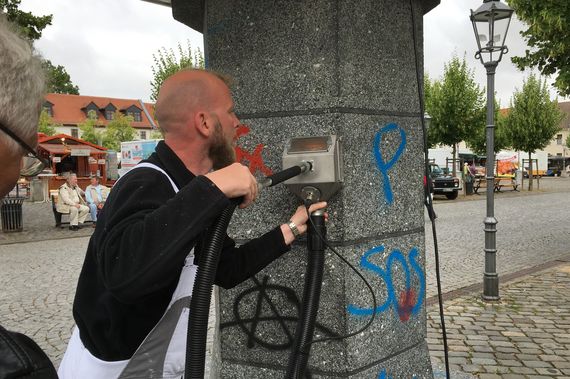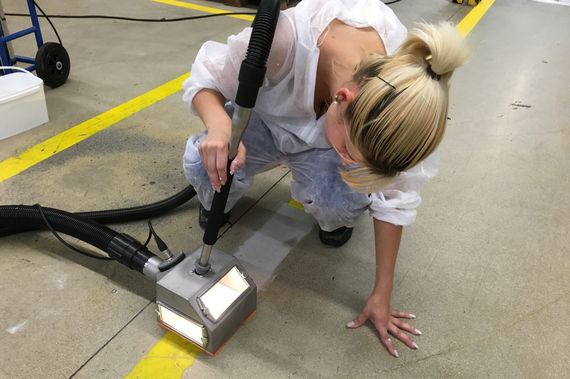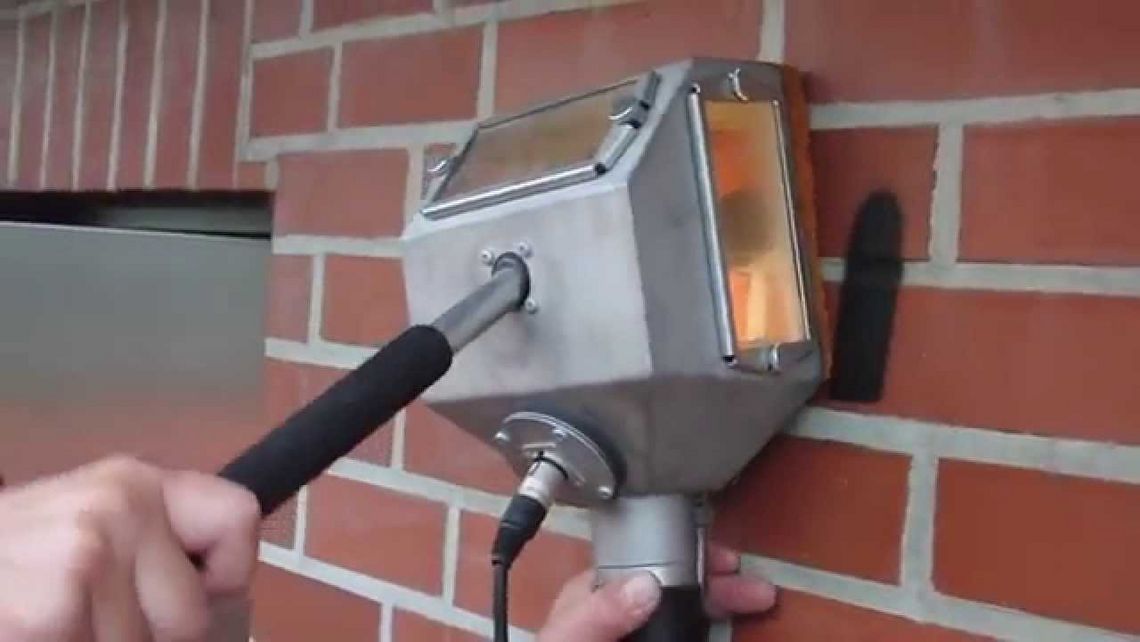Photovoltaic limescale removal

Wind and weather are leaving dirt, bird droppings, moss, dust, soot particles, pollen etc. on the photovolatic systems. Depending on the location and environment, the output of the solar system is always lower.
Many manufacturers claim that photovoltaic systems are self-cleaning and require little care and maintenance, but this is only partially correct, because the dirt, dust or soot particles floating in the clouds and atmosphere are carried away by the rain and fall onto the solar modules, while the rain removes a certain amount of the available loose contamination, but carries new dirt particles on.
In extreme weather conditions, as in our example in Jordan, a limescale crust has formed over the course of time on the photovoltaic elements. This can no longer be removed by conventional means without damaging the glass surface.
For this the vacuum blasting is the proper method. Only the blast media nutshell NS 450 can be used here, in order not to damage the glass surface. The complete cleaning is done dust-free in a closed system.
Lime and salt removal from solar panels
In this sample you can see the removal of lime and salt residues on a photovoltaic system near to the Dead Sea. After the removal of lime and salt layers, the output of the plant has risen significantly again.







